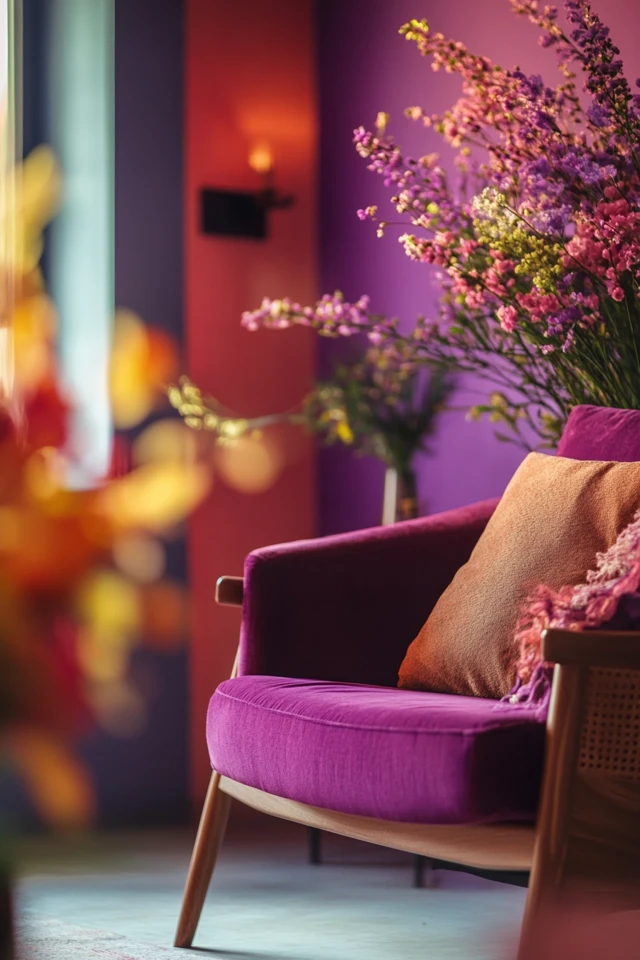Warm tones have an unparalleled ability to create a sense of comfort, intimacy, and coziness in any space. Whether you’re designing a chic bohemian retreat, a rustic sanctuary, or a modern minimalist room with a touch of warmth, incorporating warm tones is all about balance. I still remember my first attempt to bring warmth to a stark, all-white living room. At the time, it felt cold and impersonal. With a few carefully chosen accents—soft terracotta pillows, a warm-toned rug, and ambient lighting—I completely transformed the room into an inviting oasis.
Adding warm tones to an aesthetic room doesn’t mean you have to overhaul your entire design. In fact, subtle touches can have a big impact, whether it’s through color, lighting, textiles, or decor. In this guide, I’ll show you how to seamlessly incorporate warm tones into your space for a cohesive and inviting look that feels intentional and layered.
1. Start with a Warm Color Palette
The Foundation of Warmth
Choosing the right color palette is the first step to creating a warm-toned aesthetic. Warm colors like earthy browns, terracotta, mustard yellows, soft oranges, and muted reds immediately evoke coziness and intimacy.
Tips for Warm Color Palettes
- Base Colors: Use neutral warm tones like beige, taupe, or soft greys as your foundation.
- Accent Colors: Incorporate bold, warm shades like rust, copper, or mustard through smaller elements like decor or textiles.
- Layered Hues: Mix different shades of warm tones for depth, such as pairing terracotta with burnt orange or combining warm beige with deep mustard.
For a recent bedroom makeover, I painted the walls a soft clay beige and added accents in burnt orange and ochre. The layered palette created a comforting, grounded feel without overpowering the room.
2. Incorporate Natural Materials
Why Natural Textures Add Warmth
Natural materials like wood, rattan, and leather inherently carry warm undertones that bring a sense of organic coziness to any room.
How to Use Natural Materials
- Wood Furniture: Opt for pieces with warm wood finishes like oak, walnut, or teak.
- Rattan and Wicker: Add rattan chairs, baskets, or light fixtures for a bohemian touch.
- Leather Accents: A caramel leather armchair or a cognac ottoman can serve as both a functional piece and a warm-toned statement.
In one dining room project, I swapped out a glass table for a reclaimed wood table with a rich walnut finish. Paired with woven rattan chairs, the space instantly felt more inviting and grounded.
3. Play with Warm Lighting
Lighting Sets the Mood
Lighting is one of the easiest and most effective ways to add warmth to your room. Swap out harsh, cool-toned bulbs for warm lighting to create an ambient glow.
Warm Lighting Ideas
- Bulbs: Look for LED or Edison bulbs with a warm color temperature (2700K–3000K).
- Layered Lighting: Combine floor lamps, table lamps, and wall sconces for soft, layered illumination.
- Candles and String Lights: Incorporate candles or fairy lights to add flickering, golden tones that feel cozy and romantic.
For a living room redesign, I replaced a harsh overhead light with a dimmable brass floor lamp and a string of fairy lights draped along the mantle. The result was a warm, magical glow that completely transformed the space.
4. Add Warm-Toned Textiles
Cozy Textiles Are Key
Textiles like rugs, throws, and pillows are perfect for introducing warm tones and textures without committing to permanent changes.
Textile Tips for Warmth
- Throw Blankets: Choose chunky knit throws or woven blankets in earthy tones like rust, mustard, or cinnamon.
- Rugs: Layer a Persian or kilim rug with warm reds, oranges, and golds over a neutral floor for instant depth.
- Pillows: Mix and match cushions with patterns and textures in warm colors for a dynamic, layered look.
In one cozy nook I designed, I layered a vintage kilim rug with mustard-yellow and burnt-orange cushions on a neutral sofa. The combination made the space feel rich and inviting.
5. Use Art and Wall Decor
Art Brings Personality and Warmth
Wall art and decor can introduce warm tones and add a personal touch to your space.
Art Ideas for Warm Aesthetic Rooms
- Abstract Prints: Choose prints with earthy tones like sienna, terracotta, and ochre.
- Botanical Themes: Look for floral or landscape art in warm hues for a nature-inspired feel.
- Natural Frames: Use wooden frames or matte black finishes to complement warm artwork.
I recently worked on a dining room where we added a gallery wall of abstract art in warm tones like burnt sienna and deep maroon. Paired with wooden frames, the wall became a stunning focal point.
6. Introduce Warm Metallics
Metallics Add Shine and Sophistication
Metallic accents like brass, gold, and copper are an excellent way to incorporate warm tones while adding a touch of elegance.
Ideas for Warm Metallic Accents
- Lighting Fixtures: Opt for brass or gold pendant lights, chandeliers, or table lamps.
- Decorative Trays: Add a copper or gold tray to your coffee table or vanity for a subtle pop of warmth.
- Mirrors: Choose mirrors with warm metallic frames to reflect light and enhance the room’s warmth.
For a bathroom project, I replaced the chrome fixtures with brushed brass faucets and added a copper soap dish. These small changes made the space feel much more luxurious and inviting.
7. Add Greenery for Balance
Plants Complement Warm Tones
Plants bring life and vibrancy to warm-toned rooms, balancing earthy hues with fresh greenery.
Best Plants for Warm Rooms
- Large Plants: Fiddle leaf figs or monstera plants add drama and texture.
- Trailing Plants: Use pothos or ivy to soften warm furniture and decor.
- Neutral Planters: Choose terracotta pots or rattan baskets to enhance the warm aesthetic.
In a recent bohemian-inspired bedroom, I paired terracotta planters with trailing pothos plants. The greenery added balance and freshness to the room’s warm palette.
8. Decorate with Warm-Toned Accessories
Accessories Complete the Look
Small decor pieces can tie the room’s warm tones together and add those finishing touches that make a space feel complete.
Warm-Toned Decor Ideas
- Candles: Use amber glass or terracotta candle holders for a cozy vibe.
- Books: Stack books with warm-toned spines on your coffee table or shelves.
- Bowls and Vases: Incorporate ceramic or clay pieces in warm colors for a rustic touch.
For one of my favorite projects, I styled a console table with amber glass vases, a stack of cinnamon-colored books, and a woven basket. It created a cohesive, warm vignette that felt curated and intentional.
Picture Gallery
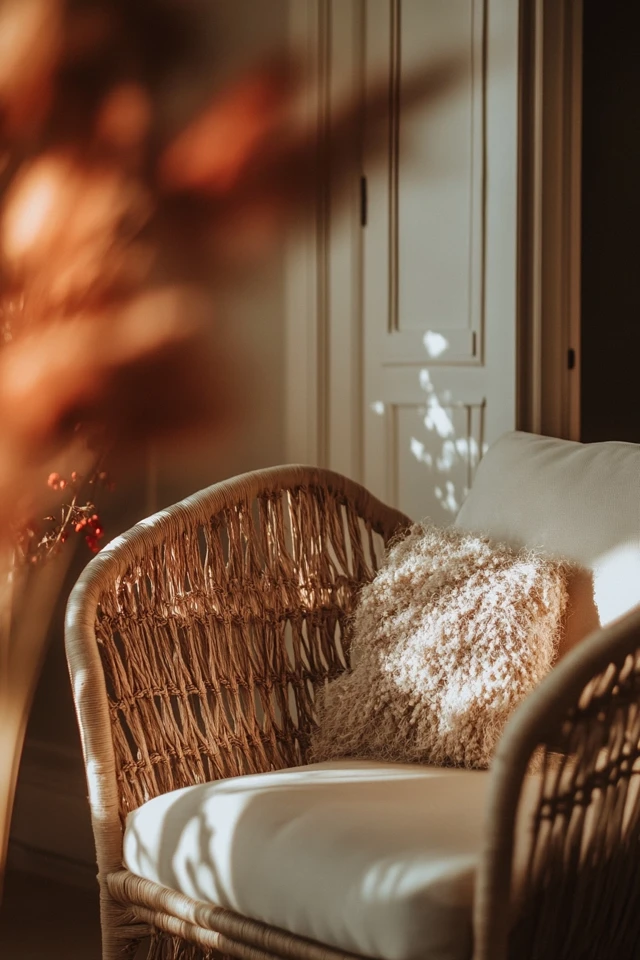
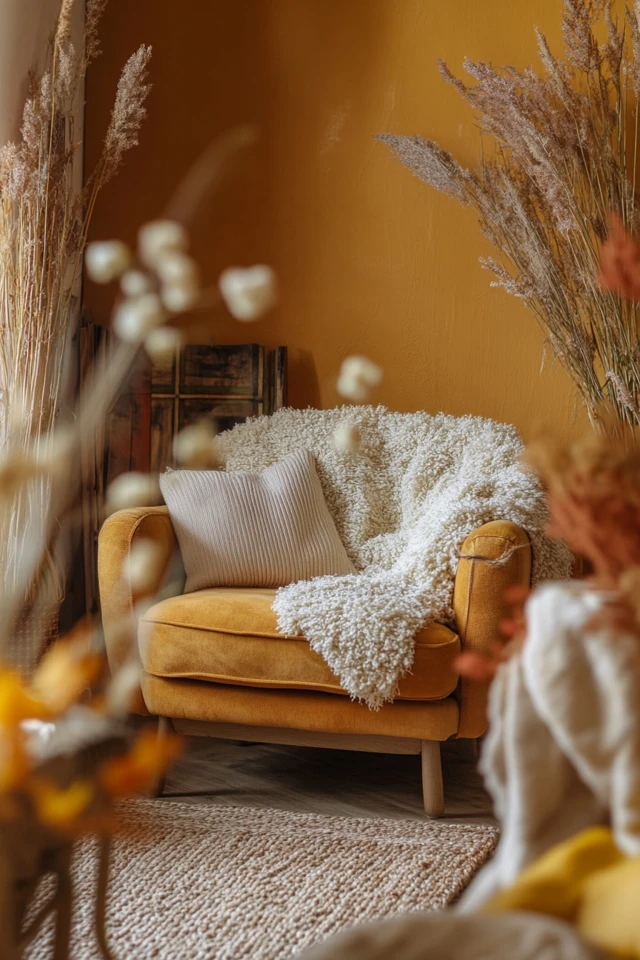

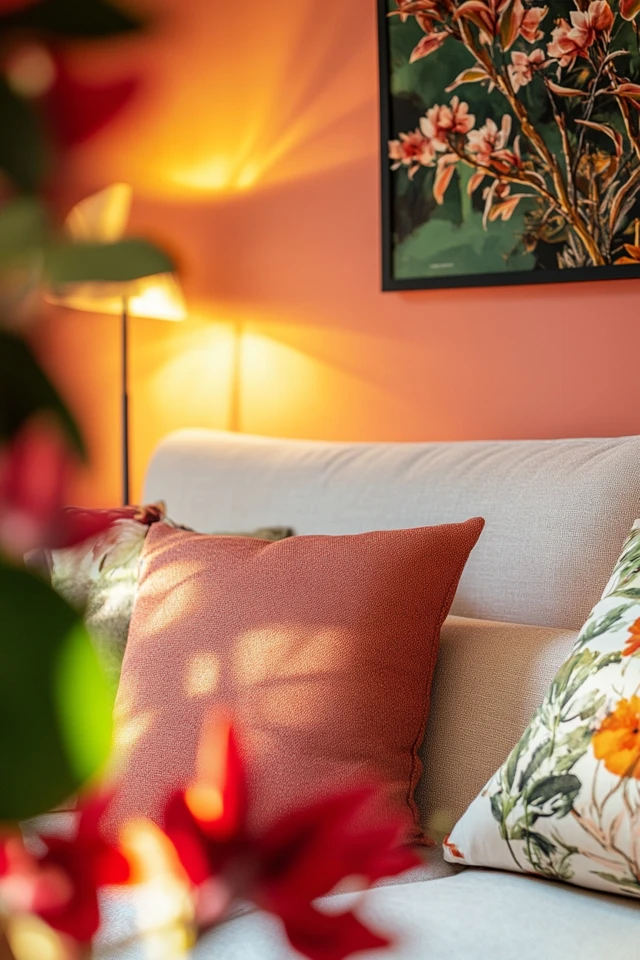
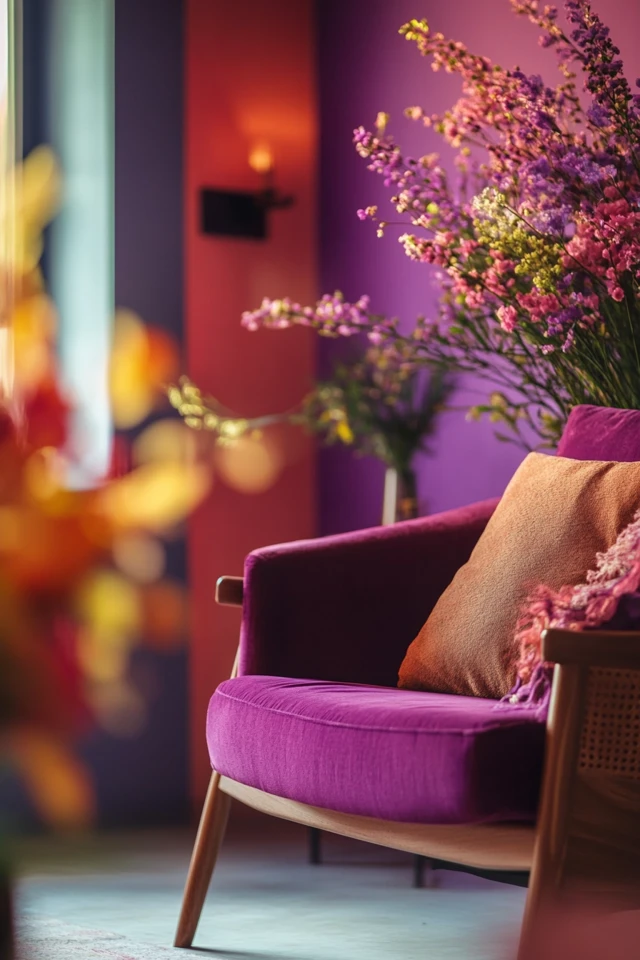
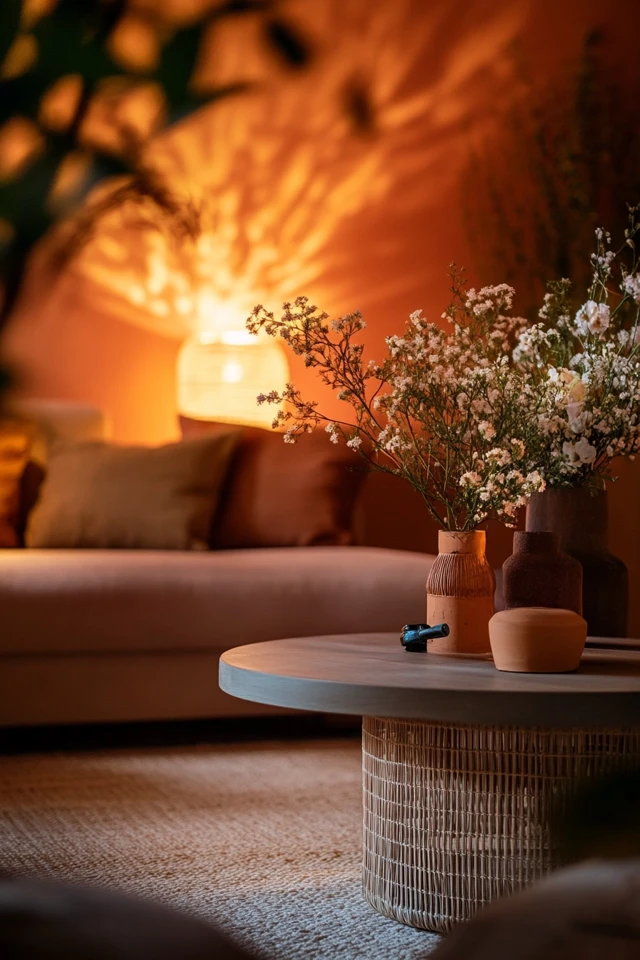
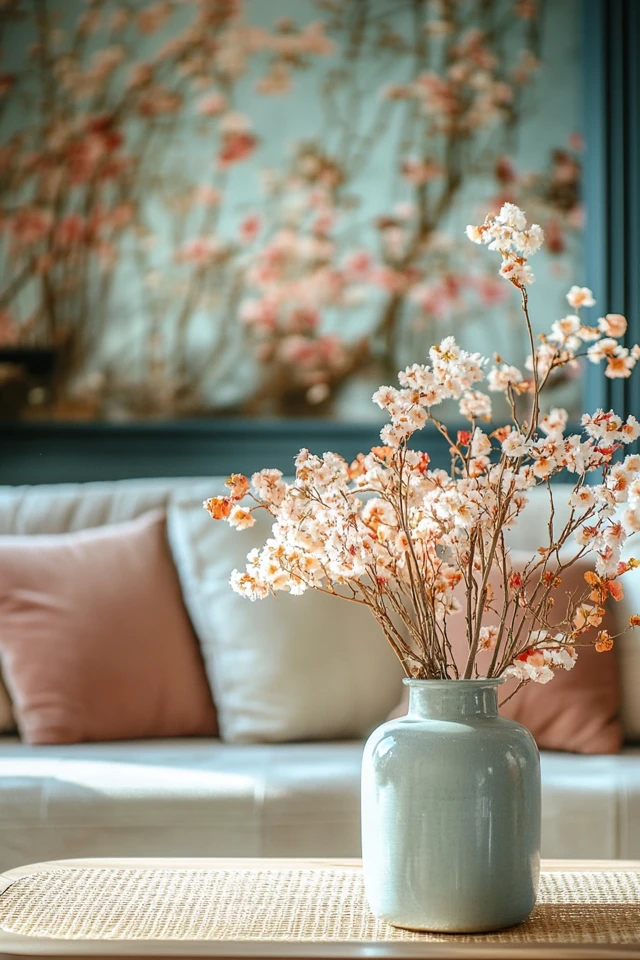
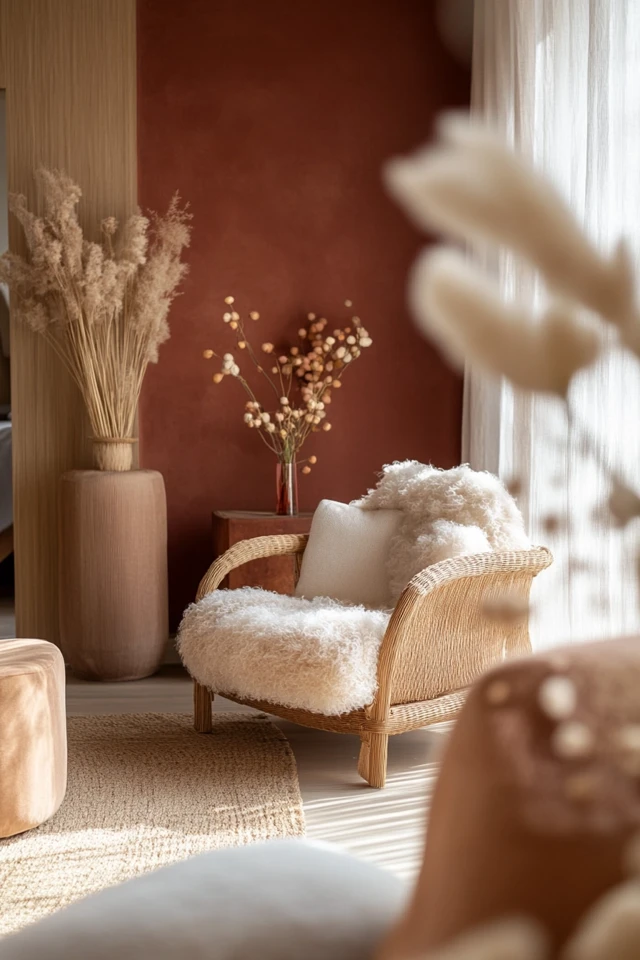
Conclusion
Adding warm tones to your aesthetic room is all about layering color, texture, and lighting to create a space that feels cozy and inviting. From earthy palettes and warm lighting to natural materials and greenery, every detail contributes to a harmonious and comforting environment.
Reflecting on my own design journey, I’ve learned that warm tones have a unique ability to make a room feel like home. Whether you’re starting with small decor changes or tackling a full room makeover, the key is to experiment and find what speaks to your personal style.
So, are you ready to bring warmth into your space? Start small with a new throw blanket or vase, or go bold with a fresh coat of paint and layered textiles. No matter your approach, the result will be a space that radiates warmth and charm.
FAQ
What are the best warm colors to use in a room?
Terracotta, mustard yellow, rust, and warm beige are excellent choices for adding warmth to your space.
How do I balance warm tones with cool tones?
Use warm tones as accents and pair them with cool neutrals like grey or white for a balanced look.
Can I add warm tones to a small room?
Absolutely! Opt for lighter warm tones like peach or beige, and use mirrors to reflect light and keep the space feeling open.
What’s the easiest way to add warmth without redecorating?
Swap out textiles like pillows and throws for warm-toned options, or add warm lighting with dimmable bulbs and candles.
Are warm tones suitable for all design styles?
Yes! Warm tones can be adapted to any style, from minimalist to bohemian to industrial, depending on how they’re paired with textures and materials.

